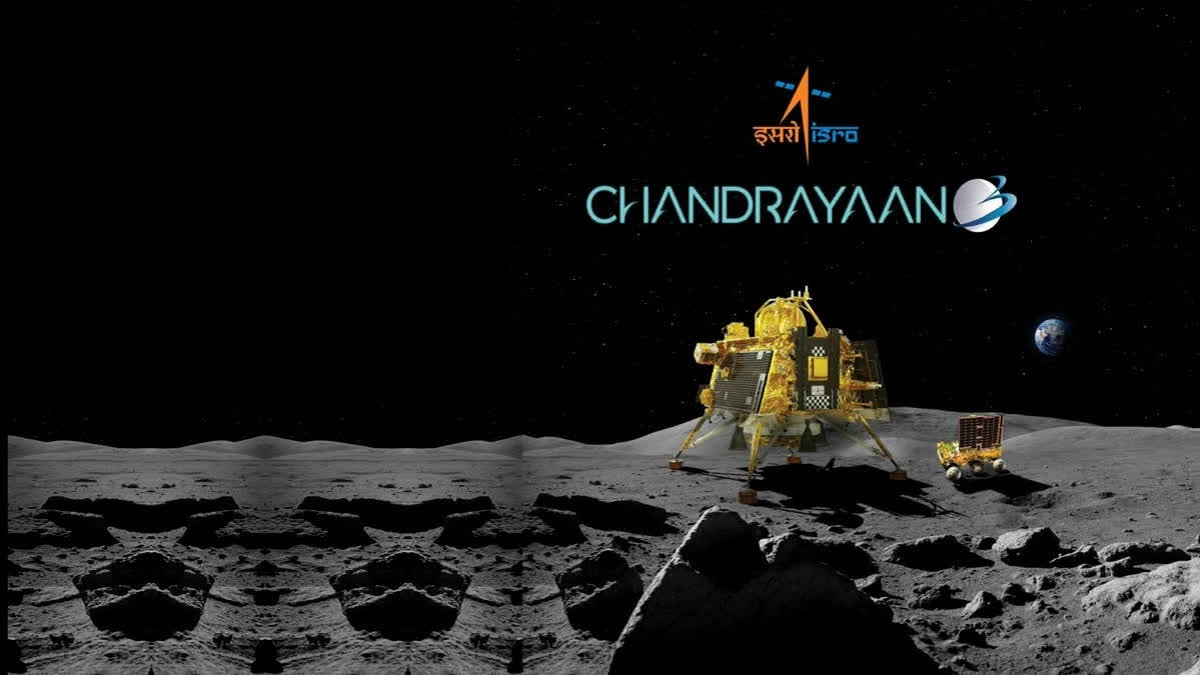Hyderabad: It won't be an exaggeration to say that 2023 was the year of India's space research. After the heartbreaking failure of the Chandrayaan-2 lunar mission on September 7, 2019, the Indian Space Research Organisation (ISRO) came a long way in the next less than four years on August 23, 2023, as S Somanath, chief of ISRO announced, "We have achieved soft landing, India is on the Moon," etching the line in every Indian's permanent memory as well as the annals of history.
The moment was no ordinary feat as India became the first ever nation to make a soft landing on the moon's south pole and the fourth nation to make a soft landing on the lunar surface joining the elite club alongside the United States, the Soviet Union, and China.
The Chandrayaan-3 mission comprising the Vikram lander and the Pragyan rover was launched on July 14, 2023, on board the LVM3-M4 vehicle from the Satish Dhawan Space Centre (SDSC-SHAR) in Andhra Pradesh's Sriharikota. On the landing day on Aug 23, the mission made a historic touchdown on the lunar surface after which the Pragyan rover was deployed.
Homecoming of the propulsion module: After the accomplishment of the mission objectives especially studying the lunar surface to help the ISRO scientists understand the composition of the surface of the moon, the Chandrayaan-3 propulsion module returned to the Earth's orbit on 22 November 2023 in a series of maneuvers which began on 9 October 2023. Between the soft landing of the Chandrayaan-3 on the lunar surface and the return of the propulsion module back to the Earth's orbit, the ISRO had hoped that the mission would make a second hop on the moon, which did not happen.
A milestone on the way to Mission 2035: Chandrayaan-3 mission, apart from making India the first nation to make a soft landing on the moon's south pole, is also touted to be a game changer as far as India'S Mission 2035 to establish the first space station by 2035 and send the first Indian to the lunar surface are concerned. The success of the Chandrayaan-3 mission also marks the opening of ISRO to private players for space research.
ISRO aiming big: If you thought that after the successful soft-landing of the Chandrayaan-3 mission, ISRO would sit back and relax to bask in the glory of the mission, you are wrong. In a prompt follow-up of the lunar mission, ISRO launched the ambitious Aditya-L1 solar mission on September 2 from the Satish Dhawan Space Centre (SDSC) in Sriharikota. In the subsequent manoeuvres, the spacecraft travelled about 1.5 million km from the Earth over 125 days and is expected to be placed in a Halo orbit around the Lagrangian point L1, considered closest to the Sun. Among other tasks to probe the solar surface, India's Aditya L1 mission will capture and transmit pictures of the Sun to the ISRO for scientific experiments.
Strategic placement and mission objectives: According to the ISRO website, upon its arrival at the L1 point, another manoeuvre binds Aditya-L1 to an orbit around L1, a balanced gravitational location between the Earth and the Sun. The strategic placement at the L1 Lagrange point ensures that Aditya-L1 can maintain a constant, uninterrupted view of the Sun, the ISRO said adding the specific location also allows the satellite to access solar radiation and magnetic storms before they are influenced by Earth's magnetic field and atmosphere.
Aditya L1 on the way: After the successful launch of the Aditya L1 solar mission, ISRO Chief S Somanath said in November that the mission is on the way and nearing its final phase. Speaking to the media on the sidelines of the 60th year of the First Sounding Rocket Launch in Kerala's Thiruvananthapuram, Somanath said 60 years was a great journey of rocketry since Vikram Sarabhai, father of the Indian space program identified Yatumba for the purpose of experimenting on sounding of the upper atmosphere.
Way forward: On the 60th year of the First Sounding Rocket Launch, ISRO released a document on the historical aspects of rocketry in India and the changes at ISRO. ISRO chief S Somanath said ISRO had come a long way since its inception and now boasts of in-house manufacturing of world-class propellants unlike in the past when they had to rely on factories.
"This is a world-class propellant not just an explosive. Designing a rocket which took years to master can now be done in a week," the ISRO chief had said. Union Minister of State (Independent Charge) Science & Technology, Atomic Energy and Space Dr Jitendra Singh had said Aditya-L1 will reach its destination, Lagrange Point 1, early next month, to be precise, around the first week of January 2024.



